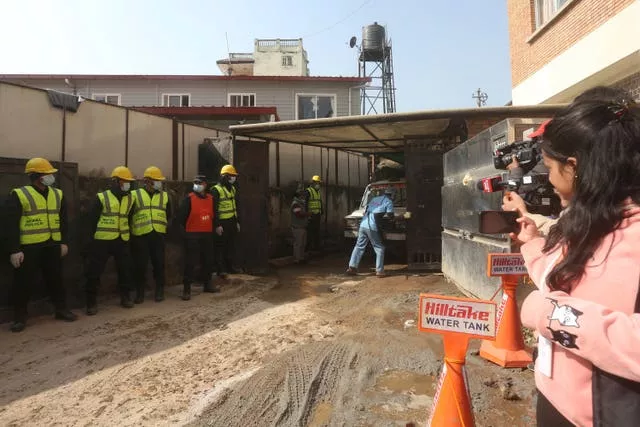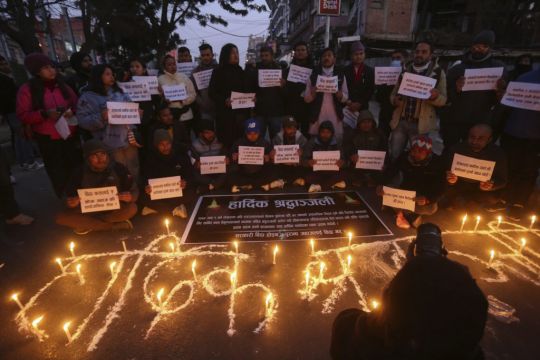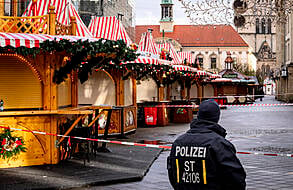The first funerals are being held for victims of the Nepal plane crash as authorities said they would send the aircraft’s data recorder to France in a bid to determine what caused the country’s deadliest air accident in 30 years.
The flight plummeted into a gorge on Sunday while on approach to the newly opened Pokhara International Airport in the foothills of the Himalayas, killing at least 70 of the 72 people on board.
Searchers found the cockpit voice recorder and flight data recorder on Monday, and combed through debris scattered down the 300m-deep ravine in search of the two missing, who are presumed dead.
The voice recorder will be analysed locally but the flight data recorder will be sent to France, said Jagannath Niraula, spokesperson for Nepal’s Civil Aviation Authority. The aircraft’s manufacturer, ATR, is headquartered in Toulouse.

The French air accident investigations agency confirmed it is taking part in the probe and its representatives were already on site.
The twin-engine ATR 72-500t, operated by Nepal’s Yeti Airlines, was completing the 27-minute flight from the capital, Kathmandu, to the resort city of Pokhara, 125 miles west.
It is still not clear what caused the crash, less than a minute’s flight from the airport in light wind and clear skies.
Aviation experts say it appears that the turboprop went into a stall at low altitude on approach to the airport but it is not clear why.
From a smartphone video shot from the ground seconds before the aircraft crashed, one can see the ATR 72 “nose high, high angle of attack, with wings at a very high bank angle, close to the ground”, said Bob Mann, an aviation analyst and consultant.

“Whether that was due to loss of power, or misjudging aircraft’s energy, direction or the approach profile, and attempting to modify energy or approach, that aircraft attitude would likely have resulted in an aerodynamic stall and rapid loss of altitude, when already close to the ground,” he said in an email.
The aircraft was carrying 68 passengers, including 15 foreign nationals and four crew members. Pokhara is the gateway to the Annapurna Circuit, a popular hiking trail in the Himalayas.
On Tuesday afternoon, over 150 people gathered at Tulsi Ghat, a cremation ground on the banks of the Seti River in Pokhara, to mourn Tribhuwan Paudel, a 37-year-old journalist and editor at a local newspaper, who died in the crash. As a priest lit the funeral pyre, close friends of Mr Paudel came together to reminisce.
Rishikanta Paudel said Mr Paudel always celebrated his successes. “He would cry with happiness whenever I did something good … I still feel like he might call me any time now and ask how I am.”
Bimala Bhandari, the chairperson for the Federation of Nepali Journalists in Kaski district, described Mr Paudel as driven and passionate about the development of Pokhara.

“He was dearest to all journalists here because of his nature,” said Badri Binod Pratik, a friend and journalist who taught Mr Paudel. “The accident has taken him away from us … I am crumbling since the day of the crash.”
Funerals for other victims, many of whom were from the area, are expected in the coming days. They include a pharmaceutical marketing agent who was traveling to be with his sister as she gave birth, and a minister of a South Korean religious group who was going to visit the school he founded.
On Monday evening, hundreds of relatives and friends were still gathered outside a local hospital. Many consoled each other, while some shouted at officials to speed up the post-mortems so they could take the bodies of their loved ones home for funerals.
Aviation expert Patrick Smith, who flies Boeing 757 and 767 aircraft and writes a column called Ask The Pilot, cautioned that a lot of details are still not known about the crash, but said that the plane “appears to have succumbed to a loss of control at low altitude”.
“One possibility is a botched response to an engine failure,” he told The Associated Press in an e-mail.
The man who shot the smartphone footage of the plane’s descent said it looked like a normal landing until the plane suddenly veered to the left.
“I saw that and I was shocked … I thought that today everything will be finished here after it crashes, I will also be dead,” said Diwas Bohora.







